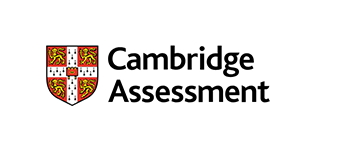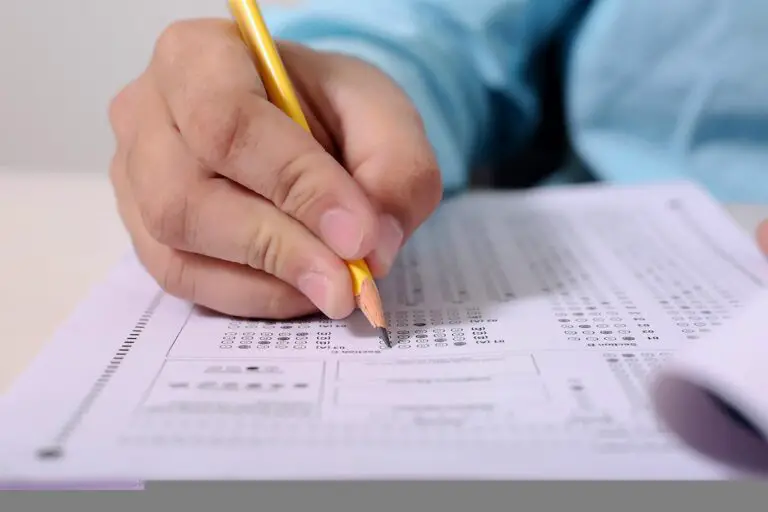The Cambridge B2 First (formerly FCE) is one of the most prestigious and widely recognised English proficiency exams in the world. In Europe, especially, teenagers and adults are keen to get the certificate for work and study.

As a teacher, that means you may be expected to prepare students for this challenging and often daunting exam. But don’t worry. This article tells you everything you need to know about the exam, and how to prepare each of the different tasks.
I’ve been preparing students for Cambridge English proficiency exams since 2016. Since then I’ve learned the ins and outs of all the exams from A2 to C1, with the B2 First a key focus of mine.
If you haven’t already, download the B2 First Handbook. It contains all the information you need. You can also download a couple of sample exams from the Cambridge website which are great to study with. I also recommend getting a copy of the B2 First Trainer book which has more practice papers with audio.
The Cambridge B2 First isn’t for everyone. If you’re not sure which exam your student(s) should take, read my article about whether it’s a good exam, and my comparisons with other major exams: TOEFL iBT and IELTS.
First up, we’ll look at the big picture, including exam structure, pass marks and level of English required. Then we’ll go over each part of the exam in more detail, before finishing with some approaches on how to best plan a exam study program.
Fundamental information about the Cambridge B2 First exam
The B2 First is an English proficiency exam that targets all the main English skills. It uses general English that an adult would typically encounter. The B2 First for Schools is almost identical in structure, but the themes are appropriate for teenage students.

What are the parts of the exam?
There are 5 parts to the exam: Speaking, Listening, Writing, Reading and Use of English. Each has their own separate exam paper, except for Reading and Use of English which are combined into one.
- Speaking: 14 minutes, in pairs
- Listening: 40 minutes
- Writing: 80 minutes
- Reading & Use of English: 75 minutes
The Listening, Writing and Reading & Use of English papers are usually done in one sitting (with short breaks in between). The Speaking part requires trained examiners. Each pair of students will do their speaking test at a different time, often on a different day to the other papers.
What is the pass mark?
To pass the Cambridge B2 First, the student must achieve a global score of 160 or more on the CEFR scale. That translates to 60% of the marks available.
Students do NOT need to get 60% in each individual part. They only need to get an average of 60%, so if they struggle with the Use of English (like many students do!) they can make up for it with a strong mark elsewhere.
What level of English is required to be successful?
As the name of the exam suggests, students should demonstrate a B2 (upper intermediate) level of English. If you’re not sure what B2 is, check out the Council of Europe page to see how the scale works.
Students should:
- Be comfortable recognising and using a range of grammar functions: conditionals, perfect and continuous tenses, passive voice, reported speech, complex sentences.
- Show a good amount of vocabulary relevant to various topics, including synonyms, phrasal verbs and collocations.
- Be able to deal with different types of texts and sources, as well as listen to different types of speech and conversations.
- Write with correct structure, tone and conventions suitable to formal and informal writing tasks (essays, reviews, articles, etc.)
- Communicate verbally with confidence on their own and with others, structuring their ideas and engaging in discussions.
This exam is difficult. There’s a high chance of failure for any candidate, but by reading the guidance below, you can maximise your students’ chances.
How to succeed in the B2 First Speaking test
The Speaking part of the B2 First exam is all about communication. While grammar and vocabulary are important, they only count for a small portion of the marks.

Clear, organised and confident speech is the key to overall success, but there are some specific things that examiners look out for.
It’s important to note that students do the Speaking exam with another candidate (and in some rare cases as part of a group of 3). They must talk with both the examiner and their partner.
Let’s look at what students do in each part of the Speaking.
- Part 1 consists of brief, personal questions: Where are you from? What do you do in your free time? and so on. Students should give plenty of information in their answers, but don’t go on for too long.
- Part 2 is the Extended Turn. Students are given two pictures and a question prompt. They must talk for 1 minute about the pictures (comparing, contrasting, suggesting) and answering the question. Then the other candidate answers a question from the examiner about the pictures. Constructing an organised, reasoned minute of speech is tricky, and I like to give my students a clear structure of what to talk about at the beginning, middle and end.
- In part 3, candidates talk together. They’re given a situation and a few different ideas. They have to discuss the ideas, saying if they agree/disagree and why. It’s really important to ask questions and respond to the other candidate’s ideas, while making sure both contribute equally.
- Part 4 starts with examiners asking for students’ opinions individually, then prompting some discussions about a topic. Again, giving good reasons and responding to other people’s ideas is key.
For many of my students, the Speaking part is the strongest. There’s a certain way of approaching the tasks which almost guarantees success. I’ve covered some of that here, but for a more detailed look, read my article: Teacher’s Guide to the Cambridge B2 First Speaking Exam.
How to approach the B2 First Listening paper
I find the Listening part of any exam the most challenging to teach. A lot of it comes down to how well the student can understand different voices, and that’s not something you can easily train in a few classes. Students should listen to a variety of English sources independently to develop that skill.
However, there are some aspects to the B2 First Listening that you can tackle directly.

In the first task, for example, it’s all about filtering negatives and doubts and finding out the one correct answer. Words like however, but, although, etc. are common trip hazards to look out for.
The second task can be a little stressful, but if you practice 3-4 examples, students can get used to the speed and when to expect important information.
Part 3 is about filtering out the distracting information again. That’s a theme in the Listening that carries on to part 4, too. It’s not just about recognising words and phrases, but being able to decide whether they’re the correct answer to the question, or just misleading traps.
I find the best way to prepare for the Listening part is for students to do the exercises at home to start with. That way they can take their time. Also, it means you don’t end up having a class where you’re just sitting around not doing anything while they listen to the audio.
For more on how to train students for the B2 First Listening part, check out my in-depth article: Teacher’s Guide to the Cambridge B2 First Listening Exam.
How to get the best marks in the B2 First Writing paper
For many students, the prospect of a writing exam makes them want to run for the hills. But in the B2 First, it’s the part where easy points can be gained.
Like the Speaking part, the focus on grammar and vocabulary isn’t as strong as you’d imagine. Instead, a lot of marks are given for organisation, using the correct tone, connecting ideas and answering the question correctly.

The first writing task is always a formal essay. In the second, students choose from 3 possible tasks which can be a letter/email, review, article, or report. The B2 First for Schools replaces the report with a story.
For all writing tasks, students should:
- Answer everything the question requires and stay on topic throughout.
- Use an introduction, paragraphs for each key point, and a conclusion.
- Know the appropriate conventions, formality and tone of the writing type (formal letter is very different to a magazine article).
- Use lots of connectors appropriately. Moreover, on the other hand, nevertheless, consequently, etc.
It takes some time for students to get used to the writing tasks. There’s a very specific way they should be done, but if your students follow the formula, they can get very good marks even if their grammar and vocabulary is slightly lacking.
I’ve written a whole article on the B2 First writing formula with detailed guidance and examples. Check it out here: Teacher’s Guide to the Cambridge B2 First Writing Exam.
How to survive the B2 First Reading & Use of English paper
Ah, the infamous Reading & Use of English paper. This part of the exam has given me and my students nightmares. It’s a real challenge.
It tests students’ vocabulary, construction of grammatical forms, interpretation of texts, ability to get the gist of something, and identification of appropriate information.

Unlike the Speaking and Writing parts, there’s no trick, there’s no formula to follow.
But there are some things you can focus on to pick up a few points here and there. These are:
- Phrasal verbs. Cambridge examiners love phrasal verbs, and recognising common ones is a great help.
- Collocations. Like phrasal verbs, they’re a favourite of the exam board.
- Synonyms and words with subtle shades of meaning (e.g. refuse and reject).
- Different forms of a root word, for example: fortunate, fortune, unfortunately.
Each of the seven tasks has its own challenge. To learn how to approach each of them, and more details about this difficult part of the exam, read my article: Teacher’s Guide: Cambridge B2 First Reading & Use of English.
Planning for exam preparation
Your plan for preparing students for the B2 First depends on how much time you have. Ideally you’ll have at least 30 or 40 sessions for students to get familiar with the exam structure and practice the tasks enough that the patterns and techniques are second nature.

But you won’t always have that luxury. Sometimes students only have a few weeks before the exam and need some last-minute guidance. So what do you do?
There are three broad situations that you might encounter.
- Last-minute preparation (5-10 sessions)
- Medium-term preparation (10-25 sessions)
- Long-term preparation (25+ sessions)
1. Last-minute preparation (5-10 sessions)
In this case, the most important thing you can do is to get students familiar with the structure of the exam and give them a few tricks and tips. You can’t teach them all the language they need to know.
- Go through the Reading & Use of English exam making sure they understand what they have to do for each task. Don’t spend too long on specific vocabulary and grammar forms.
- Focus on writing the essay and TWO of the possible tasks for the second part of the writing exam (I recommend the letter/email and the review). Focus on conventions, connectors and paragraph structure.
- Get students to do the listening part at home and bring up any doubts in class. Encourage them to watch/listen to lots of English content.
- Spend a good amount of time on part 2 of the Speaking. Without a few practice goes, this can end up as a disaster. Give them confidence and structure. Focus on part 3, too, teaching good ways of interacting with the other candidate.
A high-level student can trip up in this exam if they don’t know the format. Students who know what to do in each task will perform much better than those who don’t.
2. Medium-term preparation (10-25 sessions)
The focus of medium-term preparation should be to get students very familiar with how the exam works and give them all the strategies and tools to succeed. The vast majority of practice should be with sample papers.
You don’t have enough time to go in deep on all the vocab and grammar needed, but you can focus on a couple of problem areas they might have.
- With the Reading & Use of English paper, familiarity is key. Practice each task several times. Avoid learning all the vocabulary in the readings. Instead, focus on the common patterns that come up (in spite of, relative pronouns, reported speech).
- Writing: Focus on the essay and THREE writing tasks for part 2. I usually avoid the report, but your students may prefer to ditch a different type. Only concern yourself with fixing the most basic grammar errors, and spend more time training students to be masters of the paragraph structure and connectors.
- Get students to do most of their listening practice at home. Do some tasks in class and point out some of the key techniques, like how to filter out the distracting information.
- Do a LOT of speaking practice, particularly for parts 2 and 3. The more students do these tasks, the less nervous they’ll feel. For part 3, focus on ways to interact with the partner (asking questions, agreeing/disagreeing).
You have the flexibility to take some time in the classes to fix any big errors. For example, if students fail to use basic tenses, like the past simple, spend as much time as needed so that it’s no longer a major problem.
3. Long-term preparation (25+ sessions)
With more time, students can not only learn exactly how the exam works, but they can also develop their knowledge and skills for further success.
When preparing long term, I like to cover the most important vocabulary and grammar for the exam. That includes all the tenses (past perfect, future forms, etc.), conditionals, reported speech, passive voice and complex sentences. Themes include money, time, lifestyle, work, study, environment, and health.
I approach long-term preparation in three phases.
- First 8-12 sessions. Take a look at each task of the different parts. Teach the grammar and vocabulary forms in turn. Do a few writing tasks to see where students have strengths and weaknesses. Develop speaking skills with activities outside of the exam tasks.
- Second 8-12 sessions. Go over the exam parts again and focus on specific techniques and strategies. Fix weaknesses that students have in their language, while developing their ability to craft and structure their writings. Do more exam-specific tasks for the speaking.
- Last 8-12 sessions. Spend most of the time on exam practice. Mark speaking and writing tasks according to the official rubric. Set time limits for tasks, and do some mock speaking tests. Focus on the most difficult parts of the Reading & Use of English.
Think of your planning as an upside-down pyramid. You start broad, covering everything and lightly touching the exam tasks. As you progress, the focus on the exam questions themselves gets much stronger, until the point that you’re doing mock tests with a grade.
Conclusion
The Cambridge B2 First is for life. Once your students pass, they never have to take the test again. That’s huge.

But it’s hard. Many students will fail, regardless of how well they’ve prepared. They might have a bad day, or just miss out by one point. It’s sad and frustrating, but that’s the nature of these types of exam.
The good thing is, students can take it again. I see it like a driving test. I failed my first driving test, but a few months later I did another and passed. Now, of course, there’s a cost involved, but a failure isn’t final.
And a pass can change lives. It can mean a better job, a new opportunity to study and travel, or it can simply give someone confidence in themselves.
All exams have their own quirks and strategies. If you know how the system works, you can give your students a massive boost to their prospects, and that’s a wonderful thing.






